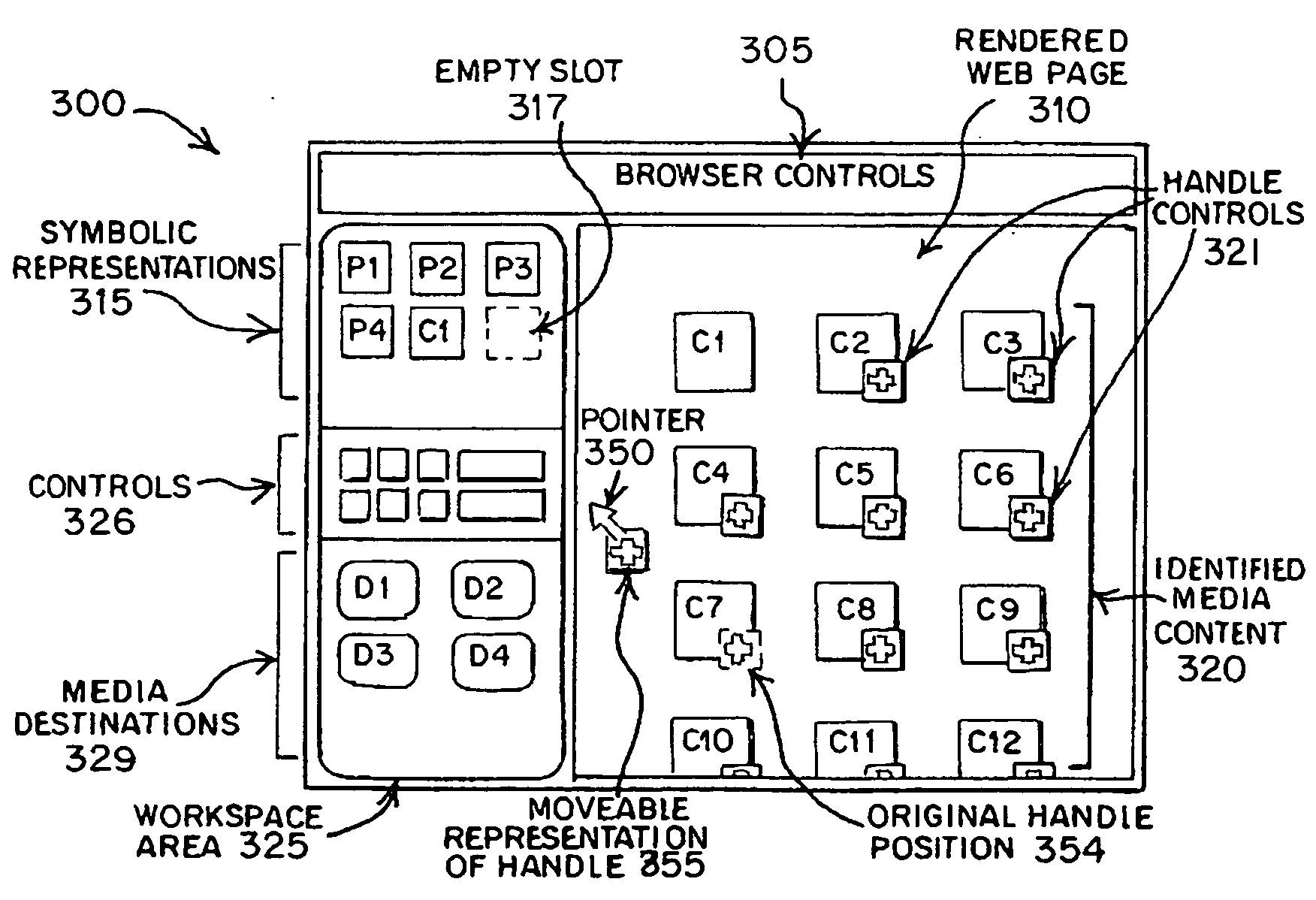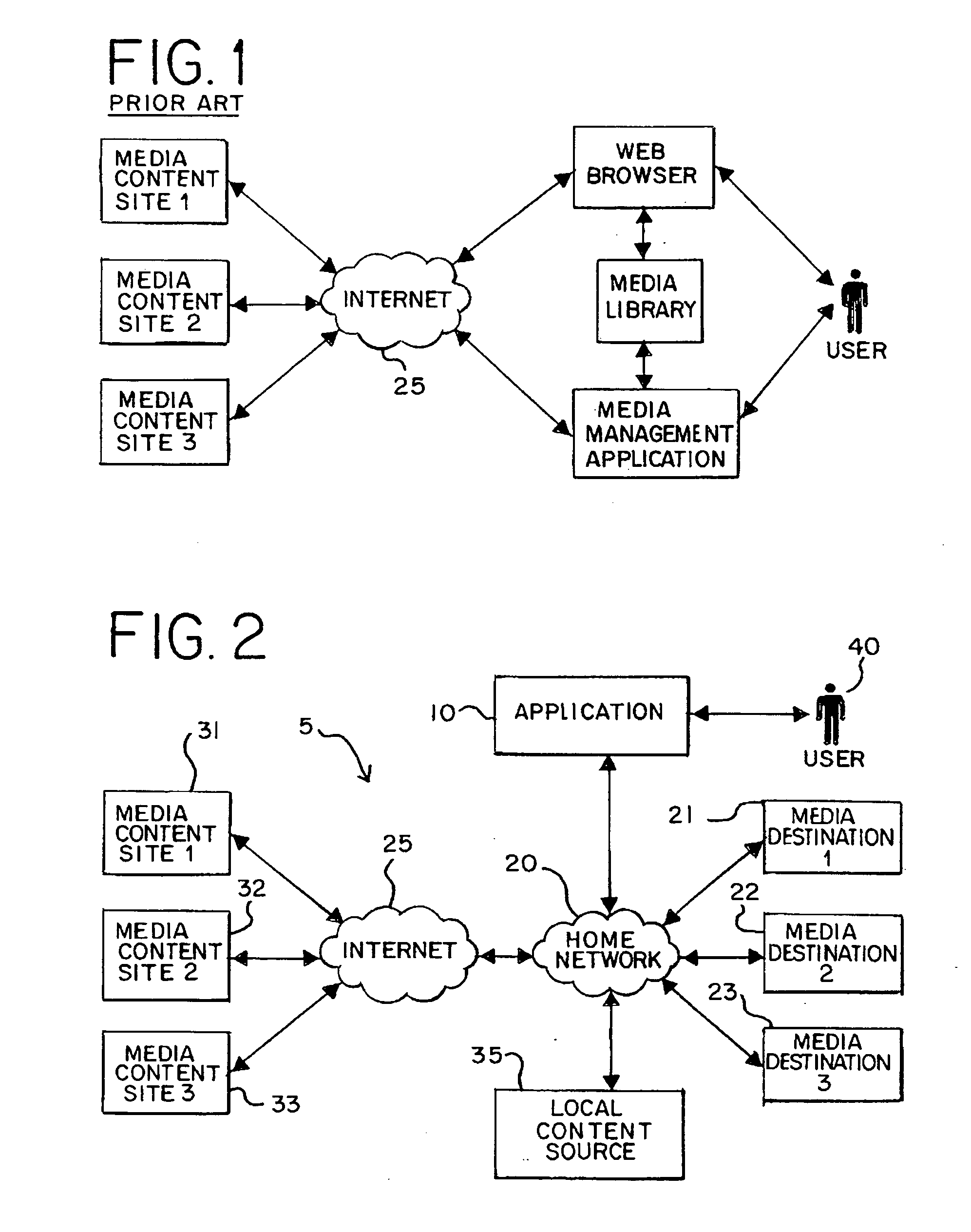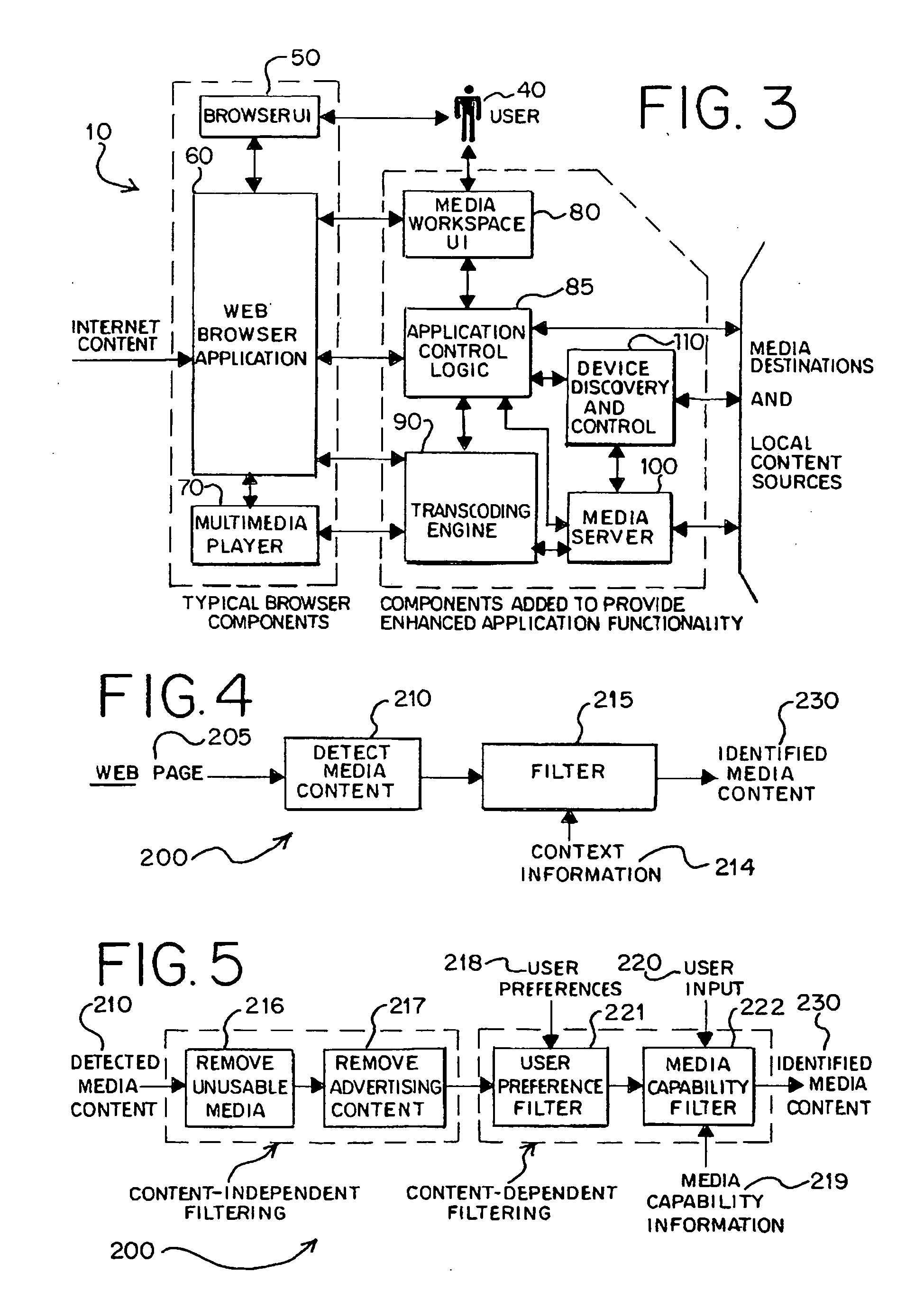The use of internet media content within a webpage and / or a web browser has limitations.
First, the user is typically limited to viewing, interacting with and consuming
the internet media content associated with the webpage according to the organization, the presentation and the functionality enabled by the webpage.
However, enhanced media functions, such as, for example, media searching, media organization, media management,
bookmarking of media, marking favorite media, creating, editing and / or using playlists based on the media, and like functions, are rarely provided by the webpage.
However, when a website provides such functions within the webpage, the enabled functionality is limited to
the internet media content provided by the website.
Thus, a user must learn to use the available functionality for each website of interest, and no common
user interface for such functionality is available in the web browser and / or the associated webpage.
Moreover, the site-specific in-page tools do not provide means to organize, manipulate, manage and / or consume
the internet media content of multiple websites.
However, the functionality is limited to photos the user uploaded to the Flickr website.
However, such tools are limited to internet media content provided by the specific website.
As a further example, a music site may provide a tool to create and play a playlist, but playlists created with the tool are limited to the internet media content provided by the specific music site.
Typically, the website owner has no interest to enable functionality for competing websites having internet media content.
A
disadvantage of media management applications is that the media management application is a, separate experience from the web browser.
A
disadvantage of media management applications is that the media management application does not provide browser controls and is not capable of selecting, requesting, retrieving or rendering webpages.
Therefore, the additional functionality is not available directly in the web browsing experience in an integrated fashion.
Alternatively, the web browser and / or the means by which the media content website incorporates the media content into the webpage may not allow the user to download the media content using the web browser.
However,
the Internet media content downloaded to the local media
library lacks the organization and the presentation of the media content website.
Moreover, the latest available media content on a dynamic media content website is not available in the media
library.
Therefore, by downloading internet media content to a local media
library, a local
media server or other local content storage location, the user loses the dynamic
vitality of the media content website associated with
the Internet media content.
To visit the website and download the content to local storage for use within a separate media management application is disadvantageous because the separate media management application does not preserve or provide the organization, presentation, and recommendation functions of the website and the associated webpages.
However, the user will not preserve the organization of the media content objects, the presentation of the media content objects and / or the additional information which may be displayed with the media content objects in the webpages provided by the media content website.
Further, the separate media management application is not aware of and cannot present to the user the recently posted media content objects which may be available on the webpages associated with the media content website.
The Cooliris plug-in program also supports marking the images and / or the videos which are recognized by the plugin as “favorites.” However, the Cooliris plug-in program is not capable of identifying relevant video and / or
image content for generic websites.
However, most websites are currently not Cooliris-enabled.
An
end user of the Cooliris plug-in program cannot enable the functionality for a website which is not supported or for which the plug-in program does not function correctly.
Further, the Cooliris plug-in program only provides the “favorites” function and does not provide the full range of media management and redirection functionality of a separate media management application.
A significant limitation of
RSS is that the media content website and / or the content provider must intentionally create and offer the
RSS feed which describes the media content.
However, most available internet media content is not offered from
RSS feeds.
Moreover, the prior art does not provide a solution to the problem of separating relevant media, namely media suitable for downloading, managing, organizing, consuming, redirecting,
synchronizing and / or otherwise using outside the context of the associated webpage, from irrelevant media, namely page
graphics, background images, advertising content and / or content unsuitable for a current task and / or expressed preferences of the user.
Thus, for a website lacking site-specific support by Cooliris or for which the internet media content is not specifically flagged and / or identified by the content provider, the Cooliris plug-in program cannot correctly identify and present the target images and / or videos.
Therefore, the existing home networking technologies have a limitation similar to the limitation of the separate media management applications because the wide range of internet media content which may be discovered in a web browsing experience cannot be redirected to, sent to or rendered on rendering devices in a home network without the inconvenient steps of downloading the content, placing the content on a local
media server, and exiting the web browser to use a separate application, such as a separate computer application, a stand-alone
control point device or the
user interface of the target rendering device.
 Login to View More
Login to View More  Login to View More
Login to View More 


